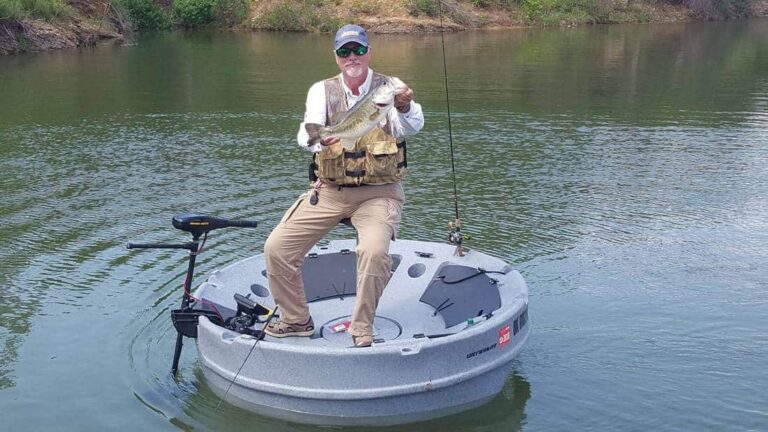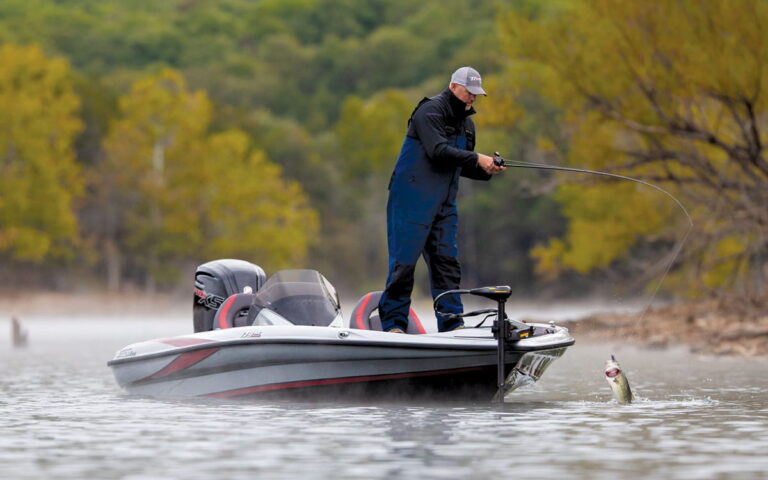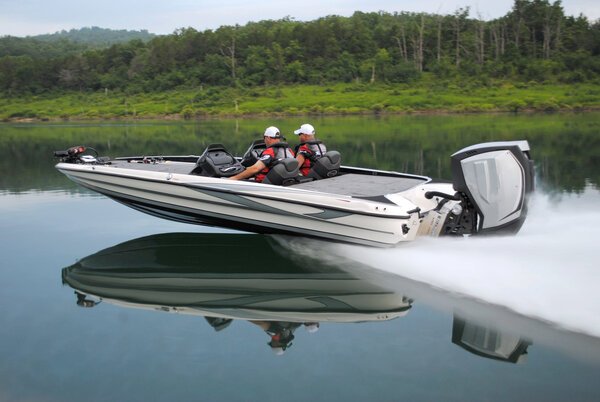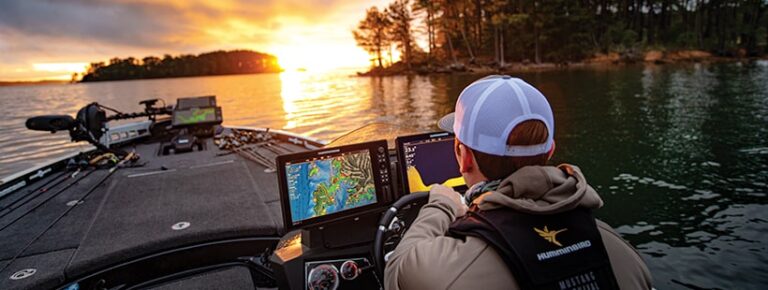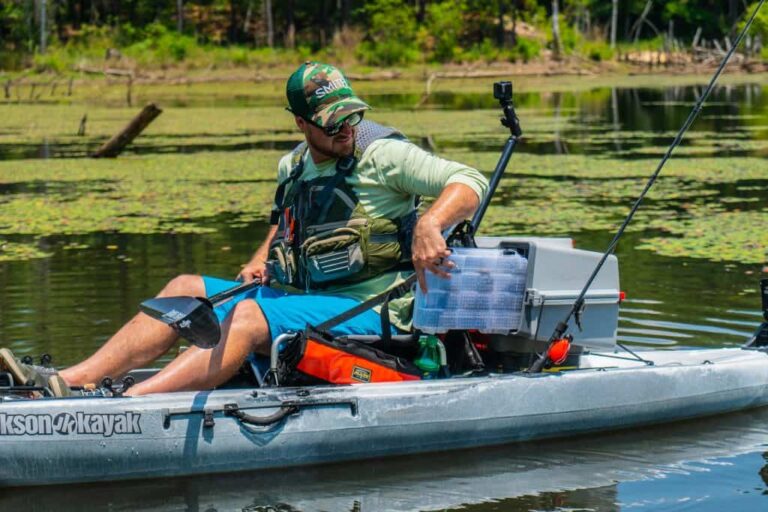Kayak Bass Fishing: Everything You Need to Know

Whether you’re new to the fishing scene or a seasoned pro looking to try something different, this article is your ultimate guide to mastering the art of kayak bass fishing.
So, get your gear ready, put on your adventure hat, and let’s dive into the wonderful world of kayak bass fishing.
Kayaks are my favorite small bass fishing boats, and they open so many fishing doors that nothing else does.
Why You Should Try Kayak Bass Fishing
Bass fishing from a kayak opens up a world of exciting opportunities and advantages that you won’t want to miss out on.
Here are some of the top perks that come with this exhilarating angling experience:
Stealth and Access to Remote Areas
Unlike a larger bass boat, kayaks allow you to navigate shallow waters and reach secluded areas where bass tend to hide.
With their stealthy approach, kayaks give you a significant advantage in getting up close and personal with your target without spooking them away.
Bass love hiding in secluded places and kayaks help you get to them.
Closer to Nature
Kayak bass fishing immerses you in nature like never before. Paddle quietly through serene waters, surrounded by breathtaking landscapes and wildlife.
The sense of tranquility and connection with nature is unmatched, enhancing the overall fishing experience.
Affordable and Convenient
Kayaks are a budget-friendly option compared to motorized boats, making fishing more accessible to everyone.
They are easy to transport, store, and launch, allowing you to hit the water without the hassle of a larger vessel.
Versatility
Whether you’re fishing in a small pond, a winding river, or a vast lake, a kayak’s maneuverability shines in various water bodies.
You can effortlessly navigate tight spots, explore coves, and even fish in areas where motorboats can’t venture.
Choosing the Right Kayak for Bass Fishing
When it comes to fishing for a kayak angler, selecting the right vessel can make all the difference between an enjoyable adventure and a frustrating one.
In this section, we’ll dive into the essential factors to consider when choosing the perfect kayak for your bass fishing needs.
From stability and storage options to compatibility with fishing accessories, we’ve got you covered with expert tips to ensure you’re well-equipped for a successful and comfortable fishing experience.
Types of Bass Fishing Kayaks
When it comes to kayak bass fishing, understanding the different types of kayaks and their suitability for the task is crucial in finding the ideal match for your angling style. Generally, there are three main types of kayaks to consider:
- Sit-On-Top Kayaks: These kayaks are incredibly popular among anglers due to their open and user-friendly design. With a spacious, sit-on-top cockpit, they offer excellent stability, making them ideal for beginners and those who prefer to fish in calm waters or near the shore. The open deck also allows for easy access to gear and fishing equipment, making it convenient for casting and reeling in catches.
- Sit-Inside Kayaks: Sit-inside kayaks provide a more enclosed cockpit, offering protection from splashes and cooler water conditions. While they may not be as stable as sit-on-top kayaks, they provide better tracking and can handle rougher waters. Sit-inside kayaks are great for anglers who venture into larger bodies of water and need a bit more speed and performance while fishing.
- Pedal-Drive Kayaks: Pedal-drive kayaks are a game-changer for bass fishing enthusiasts. Instead of using a traditional paddle, these kayaks come equipped with pedal systems that allow you to move forward and backward with your feet. This hands-free approach offers greater control and frees up your hands for fishing. Pedal-drive kayaks are perfect for covering more water efficiently, especially in windy conditions or when navigating through dense vegetation.
Factors When Selecting a Kayak
- Stability and Maneuverability: For bass fishing, stability is paramount. Look for kayaks with a wide and flat hull design, as they offer better stability, allowing you to stand up for casting and reeling in big catches with ease. Additionally, consider the kayak’s maneuverability, as you’ll need to navigate through tight spaces and around obstacles while chasing bass.
- Storage Options: Ample storage space is crucial to accommodate your fishing gear, tackle boxes, and any additional equipment you may need on the water. Look for kayaks with built-in storage compartments, bungee cords, and ample deck space to keep your essentials within reach and organized.
- Weight Capacity: Consider the weight capacity of the kayak to ensure it can handle not only your body weight but also the weight of your fishing gear and any potential catch. Overloading a kayak can affect its stability and performance, so choose one with a capacity that comfortably accommodates your needs.
- Fishing Accessories Compatibility: Check if the kayak is compatible with fishing accessories such as rod holders, fish finders, and anchor systems. Some kayaks come with pre-installed fishing-specific features, while others allow for easy customization to tailor the setup to your fishing preferences.
- Comfort and Seating: Comfort is essential for long hours of fishing. Look for kayaks with comfortable, adjustable seats that provide adequate back support. Consider models with padded seats and adjustable footrests to minimize fatigue and enhance your overall fishing experience.
- Transportation and Storage: Evaluate the kayak’s size and weight in relation to your transportation and storage options. Ensure it fits in your vehicle for easy transport and that you have sufficient space to store it when not in use.
- Hull Material: Kayaks come in different hull materials, such as polyethylene, fiberglass, and inflatable materials. Each has its advantages and disadvantages in terms of durability, weight, and performance, so choose one that aligns with your needs and budget.
- Budget: Set a budget and explore kayak options within your price range. While more expensive models may offer additional features and better materials, there are budget-friendly kayaks that still provide excellent performance for bass fishing.
- User Reviews and Recommendations: Before making a final decision, read user reviews and seek recommendations from experienced kayak anglers. Their firsthand experiences can provide valuable insights into the pros and cons of specific kayak models.
As a kayak angler, you’ll be well on your way to selecting a kayak that perfectly suits your bass fishing needs, enhancing your overall fishing enjoyment and ensuring a successful and rewarding adventure on the water.
Essential Gear and Equipment

When it comes to kayak bass fishing, having the right kayak fishing accessories can significantly elevate your fishing experience. Here are some essential items you should consider bringing along on your bass fishing adventures:
- Kayak Anchor System: An anchor system is a must-have for kayak anglers. It helps you stay in one spot, allowing you to focus on fishing without being carried away by currents or winds. Look for a reliable and easy-to-use anchor system that suits the size and weight of your kayak.
- Fish Finder: A fish finder is a game-changer for locating bass and other fish in the water. It uses sonar technology to provide real-time data on water depth, underwater structures, and fish presence. With a fish finder, you can pinpoint prime fishing spots and increase your chances of landing that prized bass.
- PFD (Personal Flotation Device): Safety should always be a top priority, and wearing a PFD is non-negotiable. A comfortable and well-fitted PFD ensures you stay afloat in case of any accidents or unexpected situations. Look for a PFD designed specifically for kayaking with ample mobility and buoyancy.
- Rod Holders: Kayak-friendly rod holders keep your fishing rods secure and within easy reach while you paddle or focus on other tasks. They prevent rods from getting tangled and allow you to have multiple setups ready for different fishing techniques.
- Dry Bags: Keep your valuables and essentials dry and protected with waterproof dry bags. These bags are essential for storing items like your phone, wallet, snacks, and extra clothing, ensuring they stay dry even if water splashes into your kayak.
Planning the Perfect Kayak Fishing Trip
Planning a successful and enjoyable kayak bass fishing trip requires a bit of preparation and consideration.
Here’s a step-by-step guide to help you plan the perfect adventure on the water:
Researching Fishing Locations
Start by researching potential fishing locations that are known for abundant bass populations.
Look for nearby lakes, rivers, ponds, or coastal areas with suitable conditions for bass fishing.
Online forums, fishing websites, and local fishing clubs are excellent resources for gathering information and recommendations from fellow anglers.
Consider Weather Conditions
Keep a close eye on weather forecasts leading up to your fishing trip. Inclement weather can impact fishing conditions and your safety on the water.
Aim for days with mild weather and minimal chances of storms to enhance your fishing experience.
Checking for Permits and Licences
Ensure you have all the necessary fishing permits and licenses required for the specific fishing location.
Different areas may have different regulations, so make sure you’re in compliance with local fishing laws and regulations to avoid any legal issues.
Pack the Right Gear and Equipment
Refer to the “Essential Gear and Equipment” section to pack all the necessary fishing gear, safety equipment, and personal items for your trip.
Don’t forget your fishing rods, lures, tackle boxes, sunscreen, water, and snacks.
Organize your gear in dry bags and secure them in your kayak for easy access.
Check Water Conditions
On the day of your fishing trip, assess the water and weather conditions once again.
Be cautious of strong currents, high winds, or sudden changes in weather.
Always prioritize safety and adjust your plans accordingly if conditions seem unfavorable.
Fishing Itinerary
Create a fishing itinerary that outlines your trip’s key details. Include the location, date, and time of your fishing excursion.
Plan where you’ll launch and the specific areas you intend to explore while bass fishing.
Having a well-thought-out itinerary helps you stay organized and make the most of your time on the water.
Kayak Maintenance

Proper kayak maintenance is essential to ensure your vessel’s longevity, safety, and peak performance during your bass fishing adventures. Here’s a comprehensive guide to keeping your kayak in excellent condition:
- Rinse After Each Use: After every fishing trip, rinse your kayak thoroughly with fresh water to remove any saltwater, dirt, or debris. Pay special attention to the hull, deck, and fishing accessories. This step helps prevent corrosion and damage caused by saltwater and pollutants.
- Inspect for Damage: Regularly inspect your kayak for any signs of damage, such as cracks, dents, or holes. Check the hull, deck, and fishing accessories, as well as the seating area and storage compartments. Address any issues promptly to prevent them from worsening.
- Store Properly: When not in use, store your kayak in a cool, dry place away from direct sunlight. Avoid leaving it exposed to harsh elements that can cause UV damage or warping. Consider using a kayak cover to protect it from dust and debris.
- Protect the Hull: Apply a protective coating, such as a UV-resistant spray or marine-grade wax, to the hull to shield it from UV rays and minor scratches. This will help maintain the kayak’s appearance and performance over time.
- Maintain Fishing Accessories: Inspect and clean your fishing accessories, such as rod holders and fish finders, regularly. Lubricate moving parts and tighten screws or fasteners as needed. This ensures they function optimally and don’t cause any issues during your fishing trips.
- Check and Replace Hardware: Periodically inspect all hardware, including handles, bungee cords, and hatches. Replace any damaged or worn-out hardware to maintain the kayak’s integrity and prevent accidents.
- Keep Seat and Paddle in Good Condition: Ensure your kayak’s seat is in good condition, with no tears or signs of wear. Check the paddles for any cracks or damage, and replace them if necessary. Comfortable seating and reliable paddles are vital for an enjoyable fishing experience.
- Avoid Dragging: Avoid dragging your kayak across rough surfaces, as it can lead to scratches, cracks, or damage to the bottom of the hull. Instead, use a kayak cart or carry it with a partner to protect the kayak’s integrity.
- Maintain Paddle Leash and Safety Equipment: Inspect and maintain your paddle leash and other safety equipment regularly. These items are crucial for your safety while kayaking and fishing, so ensure they are in good working condition.
Kayak Safety Tips
Kayak safety is paramount to ensure a secure and enjoyable bass fishing experience on the water. Here are essential safety guidelines and tips to keep in mind:
- Wear a PFD (Personal Flotation Device): Always wear a properly fitted PFD when kayaking. A PFD provides buoyancy and can be a lifesaver in case of an accident or if you find yourself in the water unexpectedly.
- Learn Basic Kayaking Skills: Before venturing out, familiarize yourself with basic kayaking techniques, such as paddling strokes, turning, and bracing. Practice these skills in calm waters to build confidence and improve your maneuverability.
- Check Weather Conditions: Check weather forecasts before heading out and be aware of any changes in weather during your trip. Avoid kayaking in severe weather, strong winds, or thunderstorms. Safety should always be a top priority.
- Inform Someone of Your Plans: Always inform a friend or family member of your kayaking plans, including your destination and estimated return time. This way, someone knows where you are and can alert authorities if you don’t return as planned.
- Dress for the Water Temperature: Dress appropriately for the water temperature rather than the air temperature. Even on warm days, the water can be cold and pose a risk of hypothermia if you accidentally capsize.
- Stay Hydrated and Protected from the Sun: Bring plenty of water to stay hydrated during your fishing trip. Additionally, wear sunscreen, a wide-brimmed hat, and protective clothing to shield yourself from the sun’s harmful rays.
- Practice Self-Rescue Techniques: Learn and practice self-rescue techniques, such as how to re-enter your kayak from the water in case of a capsize. These skills are vital in the event of an accidental flip.
- Use a Kayak Leash: Secure your paddle to the kayak using a paddle leash. This prevents the paddle from floating away if accidentally dropped in the water.
- Maintain a Safe Distance from Motorized Boats: Avoid getting too close to motorized boats, and be aware of their presence on the water. Always yield to larger vessels and give them plenty of space.
- Know Your Limits: Know your paddling and fishing limits and don’t venture into waters beyond your skill level. Start with calm, shallow waters before attempting more challenging environments.
- Carry a First Aid Kit and Safety Gear: Always carry a basic first aid kit, a whistle, a signaling device, and a waterproof flashlight in case of emergencies.
Kayak Tournament Fishing
For those seeking an exhilarating blend of angling prowess, strategic thinking, and the serenity of kayaking, tournament kayak bass fishing provides an unbeatable experience.
So, gear up, paddle out, and cast your line, as kayak sport anglers everywhere paddle towards victory in the pursuit of their fishing dreams.
Recap
- Kayak bass fishing offers an exhilarating and rewarding experience for anglers of all levels.
- Choosing the right kayak is crucial, with considerations for stability, storage, fishing accessory compatibility, and weight capacity.
- Essential gear includes an anchor system, fish finder, PFD (Personal Flotation Device), rod holders, and dry bags.
- Proper planning is vital for a successful trip, involving researching fishing locations, considering weather conditions, and obtaining permits and licenses.
- Regular kayak maintenance is essential for longevity, including rinsing after each use, inspecting for damage, and storing properly.
- Safety is paramount during kayak fishing, with guidelines such as wearing a PFD, checking weather conditions, and informing someone of your plans.
- Learning basic kayaking skills, dressing appropriately for the water temperature, and practicing self-rescue techniques are crucial for safety.
- Environmental responsibility is encouraged, with Leave-No-Trace principles and respecting wildlife habitats.
- The thrill of kayak bass fishing lies in its versatility, providing access to remote spots, closeness to nature, and a sense of freedom on the water.
- Engaging with the kayak bass fishing community through clubs, events, and online forums enhances learning and camaraderie among anglers.
Paddling this Out
And there you have it, fellow fishing enthusiasts! Our journey through the exciting world of kayak bass fishing comes to an end, but the adventure has only just begun for you!
Equipped with the right gear and equipment, from fish finders to rod holders, you’ll have the upper hand in locating those elusive bass and reeling in your prize catches.
Don’t forget the PFD for your safety—after all, having fun is even better when it’s done responsibly!
And let’s not forget about taking care of your kayak! Regular maintenance will keep it in tip-top shape, ready to tackle future fishing expeditions and bring you joy for years to come.
Safety is our top priority, so don’t forget to brush up on your kayaking skills and practice self-rescue techniques.
With these measures in place, you can fish with confidence, knowing you’re well-prepared for any challenges that come your way.
Now, grab your gear, secure your seat, and paddle towards your next bass fishing escapade.
The waters are calling, and your next incredible angling experience awaits!

